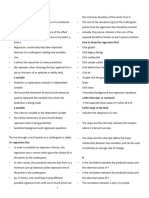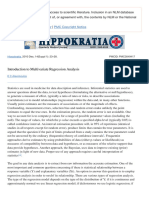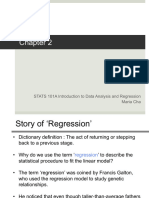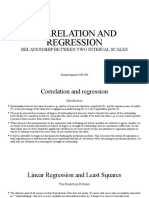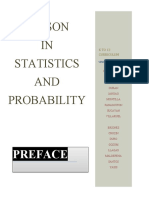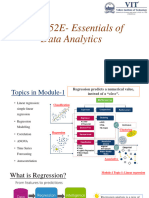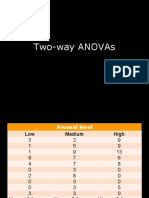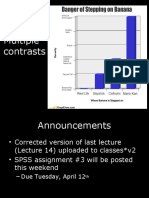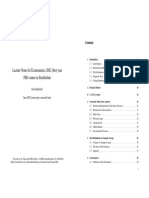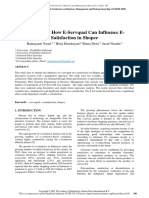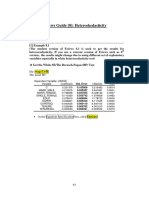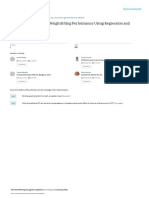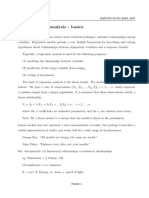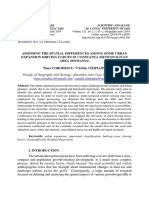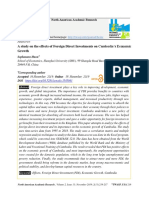0% found this document useful (0 votes)
70 views54 pagesLinear Regression II
Linear regression finds the linear relationship between two variables by estimating the intercept and slope of the line that best fits the data. The intercept is the value of Y when X is 0, and the slope is the change in Y given a one unit change in X. Residuals are the differences between actual Y values and predicted Y values from the regression line. The variance of the estimate quantifies the error in predictions as the average squared residuals, with smaller variance indicating better fit. The coefficient of determination (R2) shows the proportion of variance in Y explained by the regression line.
Uploaded by
Mutai VictorCopyright
© Attribution Non-Commercial (BY-NC)
We take content rights seriously. If you suspect this is your content, claim it here.
Available Formats
Download as PPT, PDF, TXT or read online on Scribd
0% found this document useful (0 votes)
70 views54 pagesLinear Regression II
Linear regression finds the linear relationship between two variables by estimating the intercept and slope of the line that best fits the data. The intercept is the value of Y when X is 0, and the slope is the change in Y given a one unit change in X. Residuals are the differences between actual Y values and predicted Y values from the regression line. The variance of the estimate quantifies the error in predictions as the average squared residuals, with smaller variance indicating better fit. The coefficient of determination (R2) shows the proportion of variance in Y explained by the regression line.
Uploaded by
Mutai VictorCopyright
© Attribution Non-Commercial (BY-NC)
We take content rights seriously. If you suspect this is your content, claim it here.
Available Formats
Download as PPT, PDF, TXT or read online on Scribd
/ 54

















